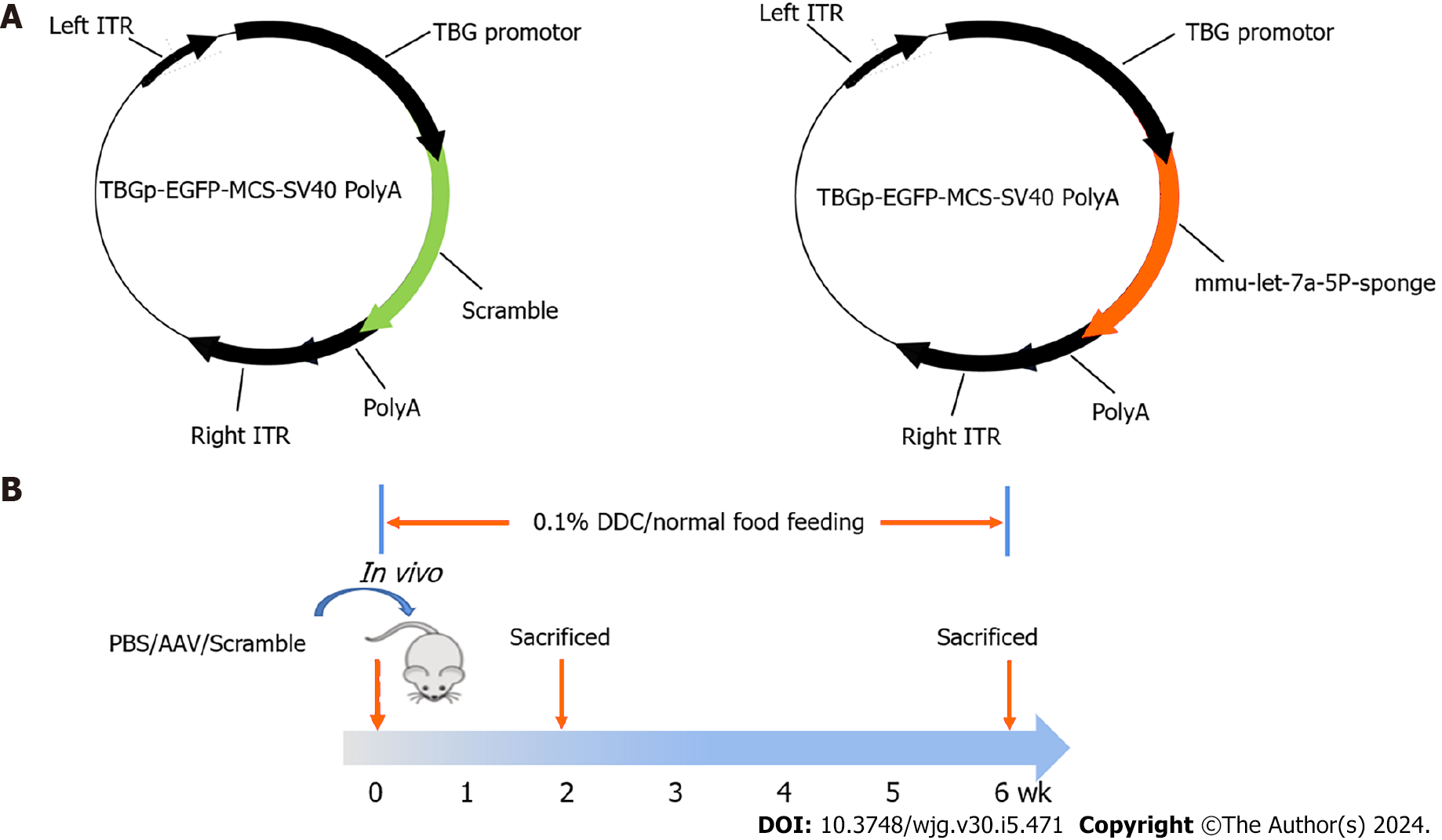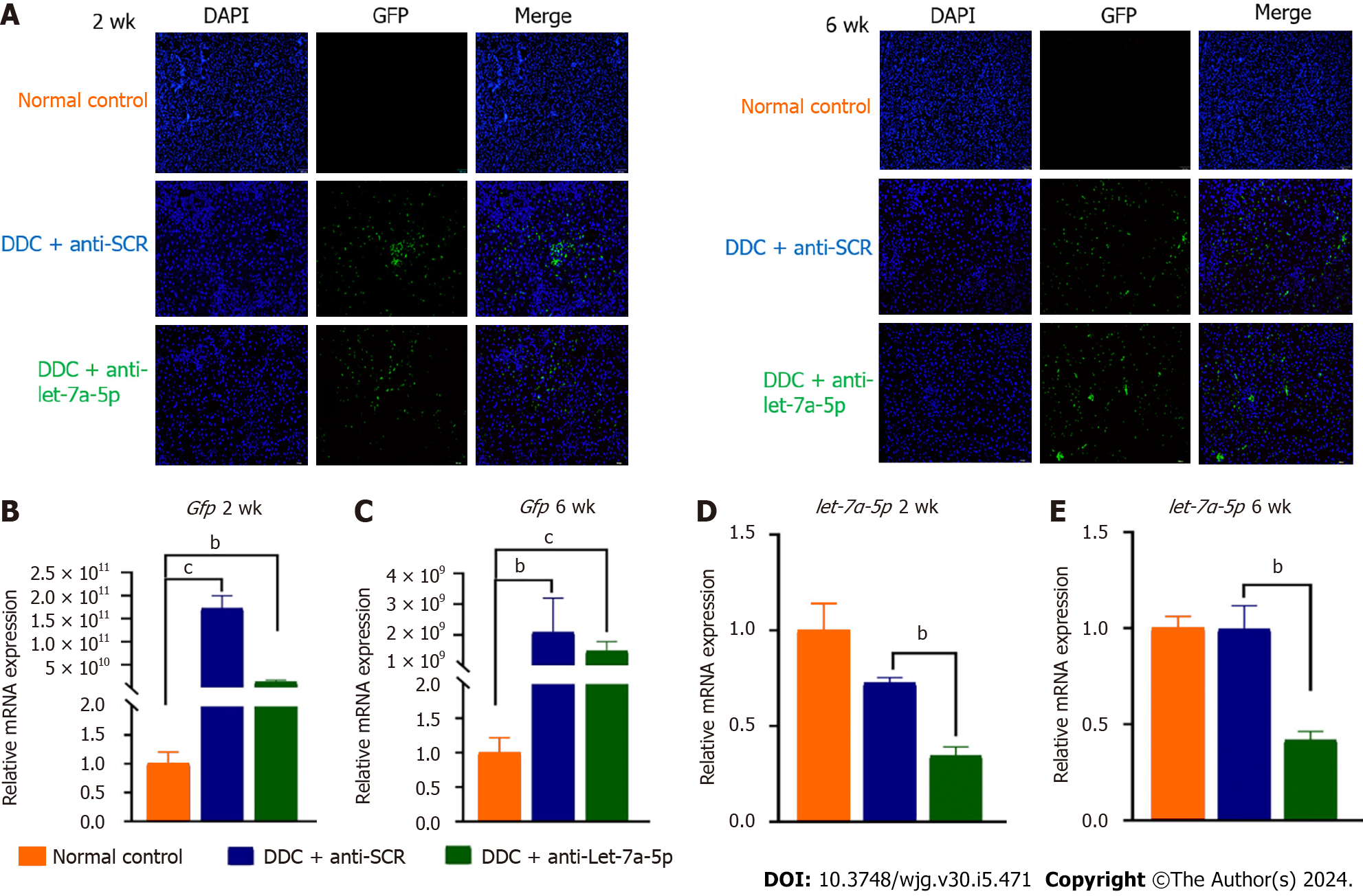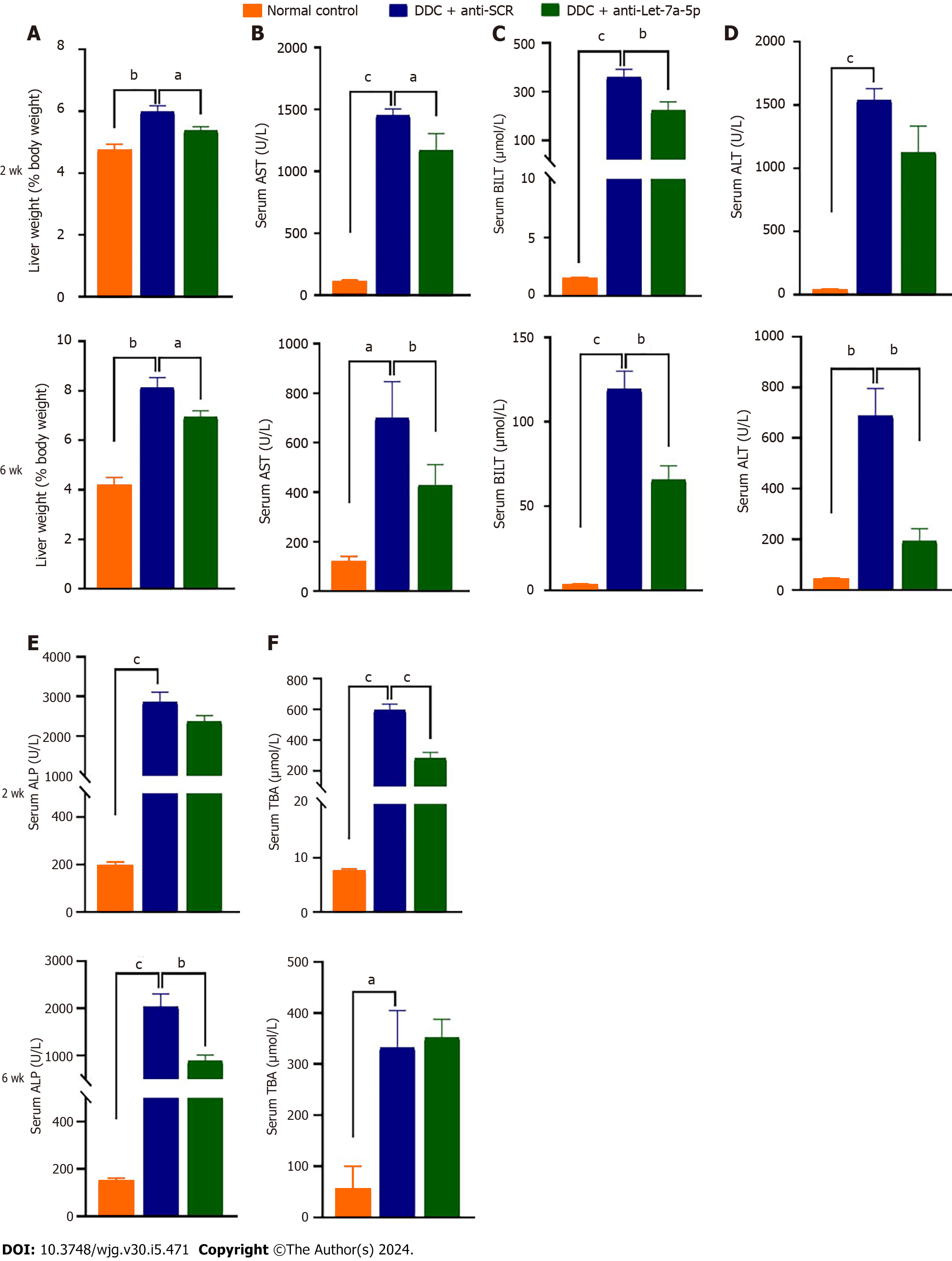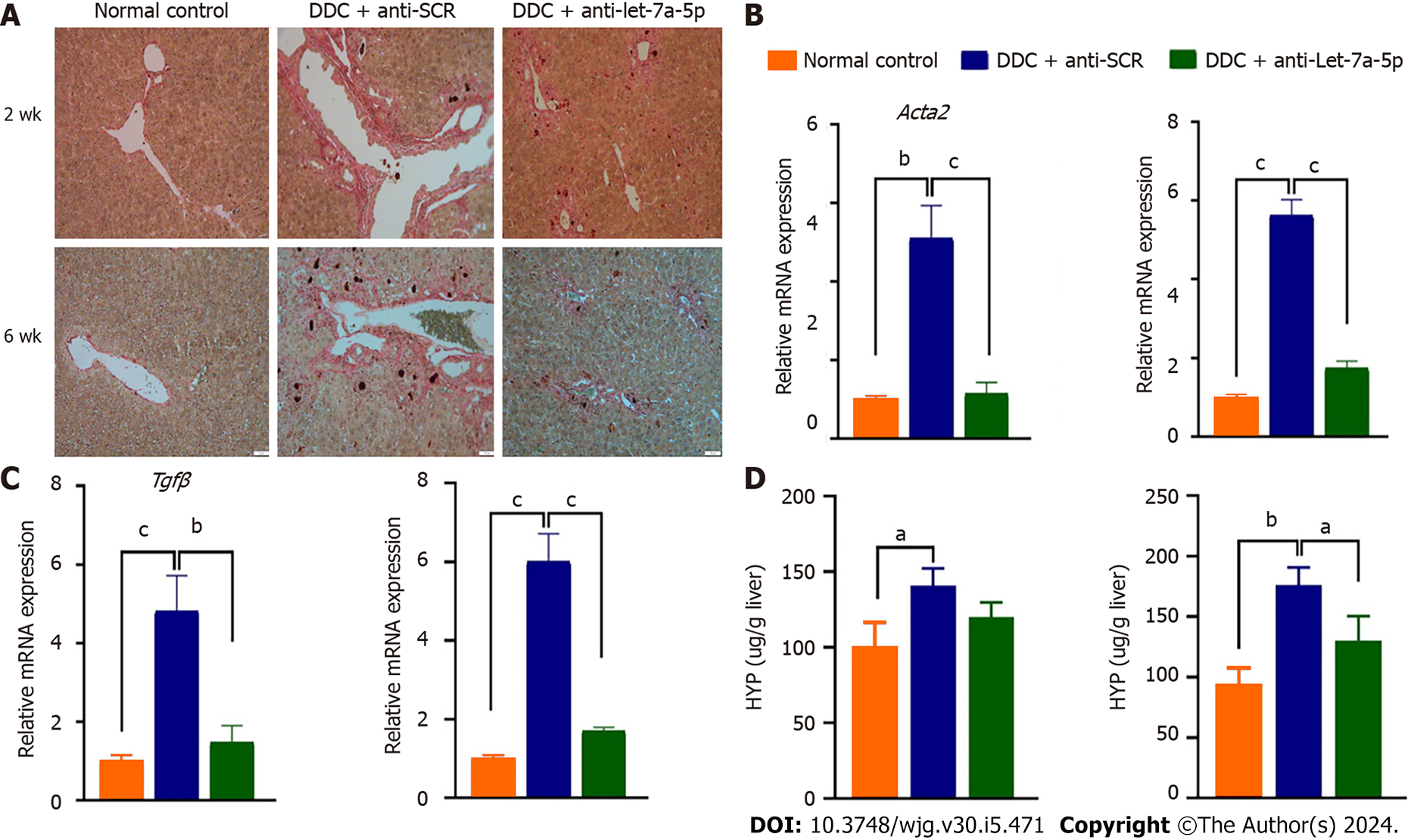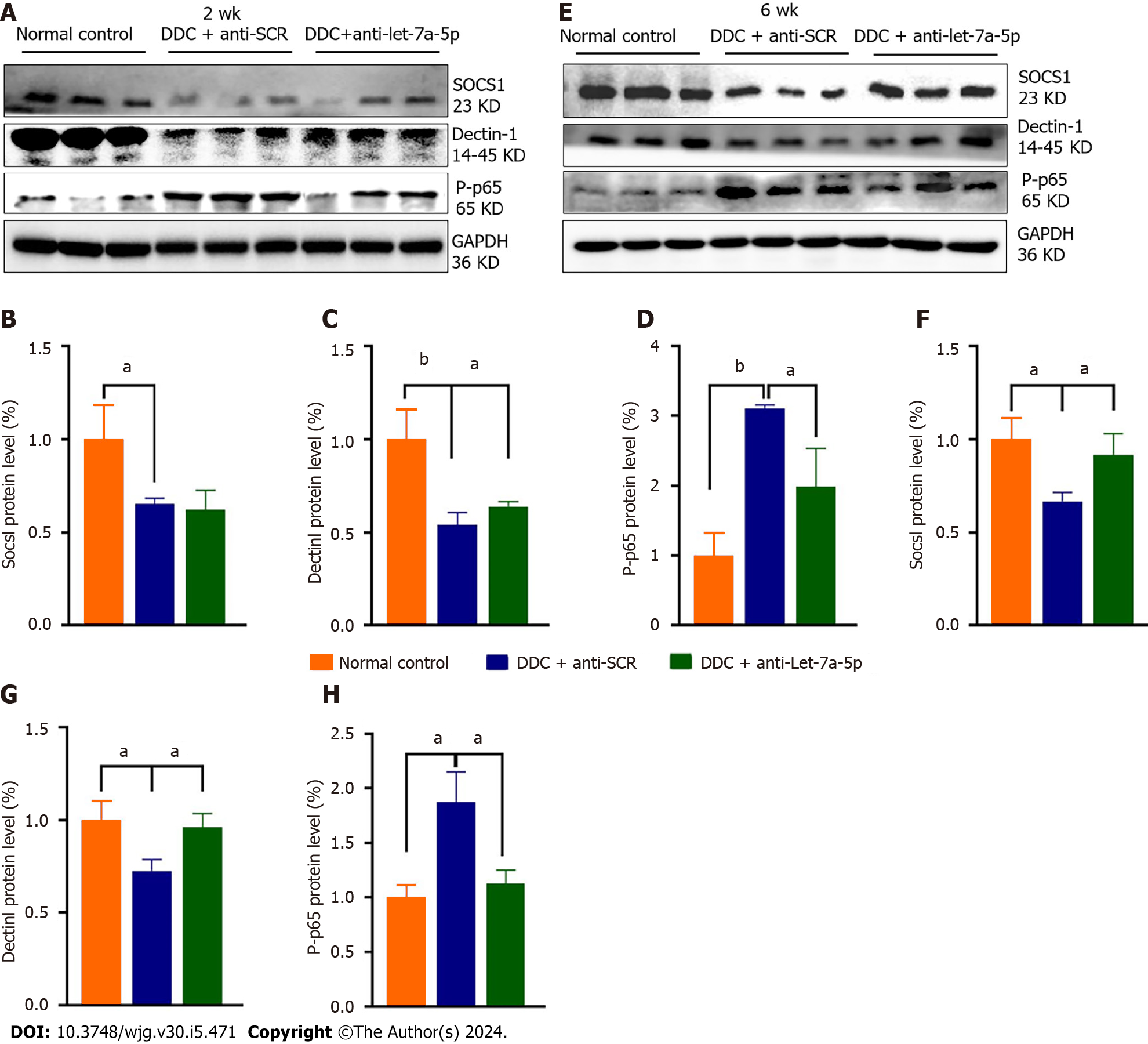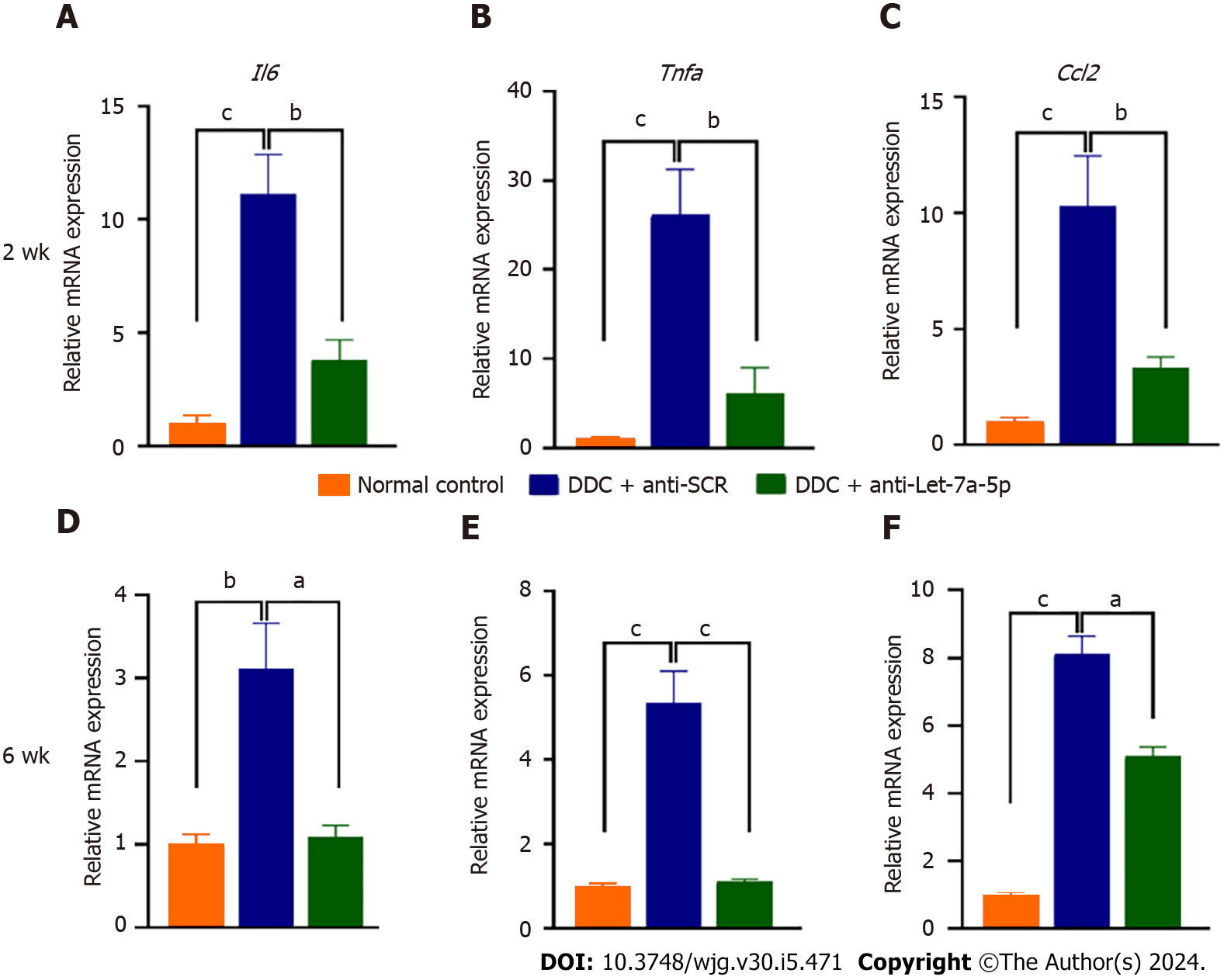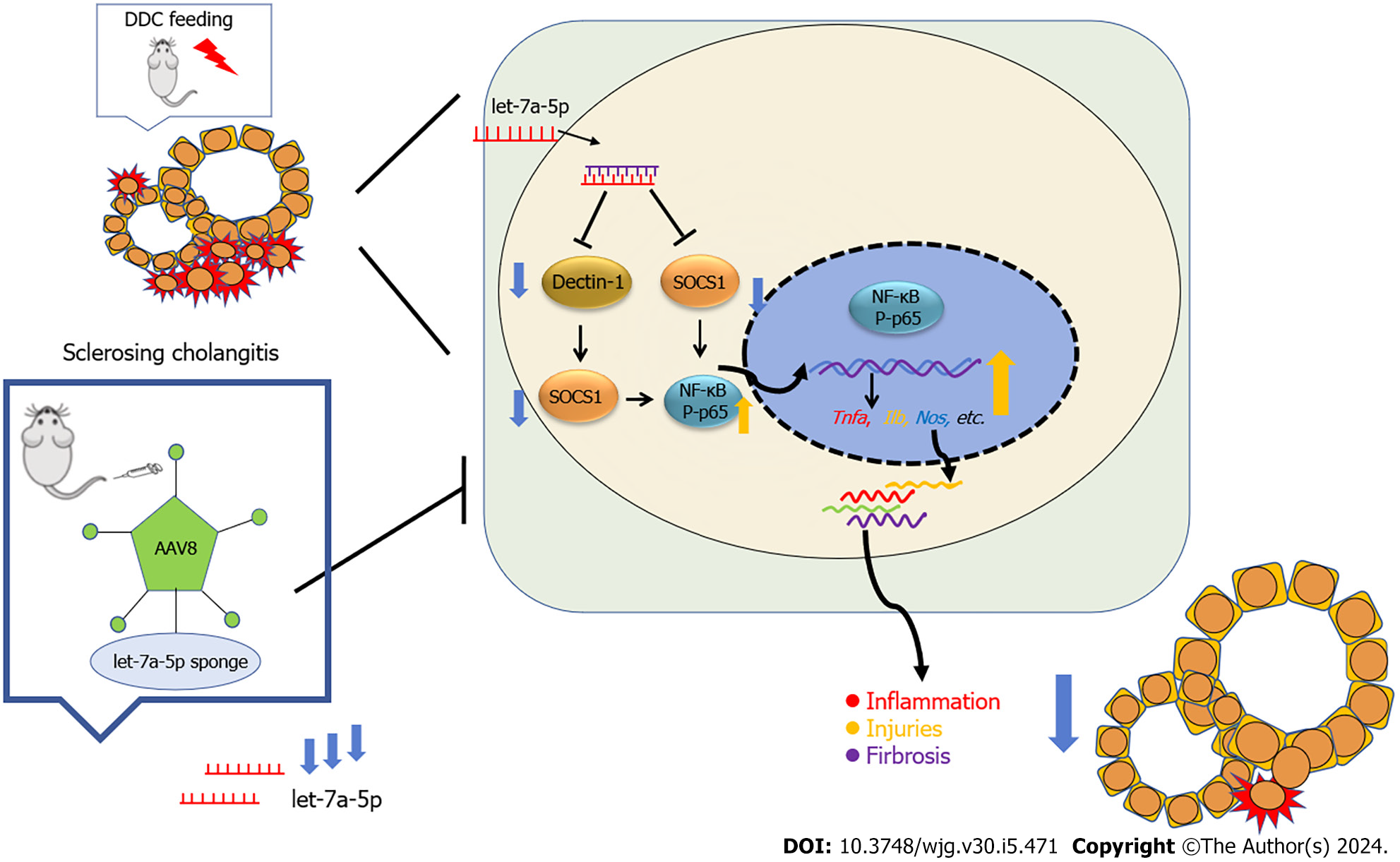Copyright
©The Author(s) 2024.
World J Gastroenterol. Feb 7, 2024; 30(5): 471-484
Published online Feb 7, 2024. doi: 10.3748/wjg.v30.i5.471
Published online Feb 7, 2024. doi: 10.3748/wjg.v30.i5.471
Figure 1 Schematic representation of recombinant adeno-associated virus 8 delivered let-7a-5p inhibitor and the design of experiment.
A: Diagrams of anti-let-7a-5p sponges’ vector and anti-scramble control (SCR) control vector; B: The design of the experiment. The mice were divided 3 groups (n = 6 for each group): (1) Normal control mice with feeding chow; (2) 3,5-Diethoxycarbonyl-1,4-Dihydrocollidine (DDC) feeding mice who were iv injected with adeno-associated virus 8-anti-SCR at the dose of 4 × 1011 vg per mouse; and (3) DDC feeding mice were iv injected with anti-let-7a-5p sponges (anti-let-7a-5p) at the dose of 4 × 1011 vg per mice. The mice in each group were sacrificed at 2 wk and 6 wk after DDC feeding to evaluate the expression of let-7a-5p and the therapeutic effects of let-7a-5p inhibitor. ITR: Invert terminal repeat; TBG: Thyroxine-binding globulin; DDC: 3,5-Diethoxycarbonyl-1,4-Dihydrocollidine; AAV: Adeno-associated virus.
Figure 2 The expression of let-7a-5p is depressed using anti-let-7a-5p sponges delivered by recombinant adeno-associated virus 8.
A: The recombinant adeno-associated virus 8 was extensively distributed in the liver of mice after 2 or 6 wk of 3,5-Diethoxycarbonyl-1,4-Dihydrocollidine (DDC) feeding; B and C: The relative expression of GFP indicates the relative amounts of virus; D and E: The relative expression of let-7a-5p in the liver of mice injected by adeno-associated virus 8-mediated scramble control or anti-let-7a-5p sponges after 2 wk or 6 wk of DDC feeding. DDC: 3,5-Diethoxycarbonyl-1,4-Dihydrocollidine; SCR: Scramble control. bP < 0.01, cP < 0.001.
Figure 3 Recombinant adeno-associated virus 8 mediated anti-let-7a-5p protects from 3,5-Diethoxycarbonyl-1,4-Dihydrocollidine-induced hepato-biliary damages.
A: The ratio of Liver weight to body weight; B-E: Serum levels of aspartate aminotransferase, total bilirubin, alanine aminotransferase, and alkaline phosphatase in the normal control, scramble control, and anti-let-7a sponge (anti-let-7a-5p) mice for 3,5-Diethoxycarbonyl-1,4-Dihydrocollidine feeding at the indicated time (2 wk and 6 wk). DDC: 3,5-Diethoxycarbonyl-1,4-Dihydrocollidine; SCR: Scramble control; AST: Aspartate aminotransferase; BILT: Total bilirubin; ALT: Alanine aminotransferase; ALP: Alkaline phosphatase; TBA: Total bile acid. aP < 0.05, bP < 0.01, cP < 0.001.
Figure 4 Let-7a-5p inhibition delivered by recombinant adeno-associated virus 8 prevents liver pathology and the proliferation of cholangiocytes.
A: Histological changes at 2 and 6 wk was evaluated using hematoxylin and eosin staining. The upper panel was shown in 100 times amplification; the nether panel was shown in 200 times amplification; B: CK19 was stained for indicating the proliferation of cholangiocytes using Immunohistochemistry staining; C: and the percent of CK19 positive cells in the liver was calculated at 2 and 6 wk. DDC: 3,5-Diethoxycarbonyl-1,4-Dihydrocollidine; SCR: Scramble control. cP < 0.001.
Figure 5 Let-7a-5p inhibition mediated by recombinant adeno-associated virus 8 ameliorates biliary fibrosis in the 3,5-Diethoxycarbonyl-1,4-Dihydrocollidine-induced cholestasis model.
A: Sirius Red staining in the liver of mice at 2 wk and 6 wk after 3,5-Diethoxycarbonyl-1,4-Dihydrocollidine feeding; B and C: The fibrosis markers such as Acta 2 and Tgfb were evaluated using qRT-PCR; D: The contents of Hyp in the liver of mice in each group were determined. DDC: 3,5-Diethoxycarbonyl-1,4-Dihydrocollidine; SCR: Scramble control; Hyp: Hydroxyproline. aP < 0.05, bP < 0.01, cP < 0.001.
Figure 6 Recombinant adeno-associated virus 8 mediated let-7a-5p inhibitor interfers suppressor of cytokine signaling 1/Dectin1 mediated NF-κB signaling pathway.
The expression of suppressor of cytokine signaling 1 (SOCS1)/Dectin1/P-p65 in each mouse of normal control group, anti-scramble control and anti-let-7a-5p group were assayed by western-blot. A: The blot of SOCS1/Dectin1/ P-p65 in each group after 2 wk 3,5-Diethoxycarbonyl-1,4-Dihydrocollidine (DDC) feeding; B-D: the relative levels of SOCS1, Dectin1, and P-p65 in each group after 2 wk DDC feeding; E: The blot of SOCS1/Dectin1/P-p65 in each group after 6 wk DDC feeding; F-H: relative levels of SOCS1, Dectin1, and P-p65 in each group after 6 wk DDC feeding. DDC: 3,5-Diethoxycarbonyl-1,4-Dihydrocollidine; SCR: Scramble control. aP < 0.05, bP < 0.01.
Figure 7 Let-7a-5p inhibition mediated by adeno-associated virus 8 ameliorates local pro-inflammatary cytokines produced.
The levels of Il6, Tnfa, and Ccl2 in the liver of mice from each group after 3,5-Diethoxycarbonyl-1,4-Dihydrocollidine (DDC) feeding for 2 or 6 wk were evaluted by qPCR. A-C: The relative levels of Il6, Tnfa, and Ccl2 after 2 wk DDC feeding; D-F: The relative levels of Il6, Tnfa, and Ccl2 after 6 wk DDC feeding. DDC: 3,5-Diethoxycarbonyl-1,4-Dihydrocollidine; SCR: Scramble control. aP < 0.05, bP < 0.01, cP < 0.001.
Figure 8 Schematic summary of an amelioration of sclerosing cholangitis in a clinically relevant mouse model by recombinant adeno-associated virus 8-mediated microRNA let-7a inhibition.
DDC: 3,5-Diethoxycarbonyl-1,4-Dihydrocollidine; SOCS: Suppressor of cytokine signaling.
- Citation: Hua H, Zhao QQ, Kalagbor MN, Yu GZ, Liu M, Bian ZR, Zhang BB, Yu Q, Xu YH, Tang RX, Zheng KY, Yan C. Recombinant adeno-associated virus 8-mediated inhibition of microRNA let-7a ameliorates sclerosing cholangitis in a clinically relevant mouse model. World J Gastroenterol 2024; 30(5): 471-484
- URL: https://www.wjgnet.com/1007-9327/full/v30/i5/471.htm
- DOI: https://dx.doi.org/10.3748/wjg.v30.i5.471









